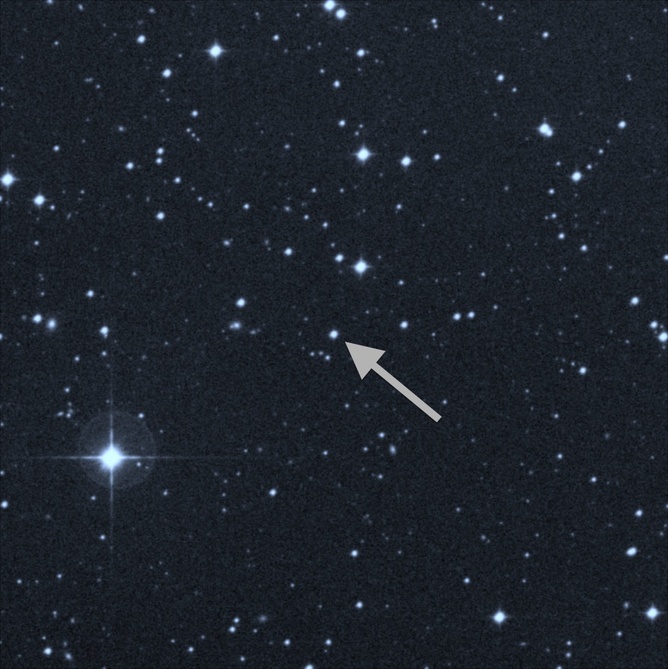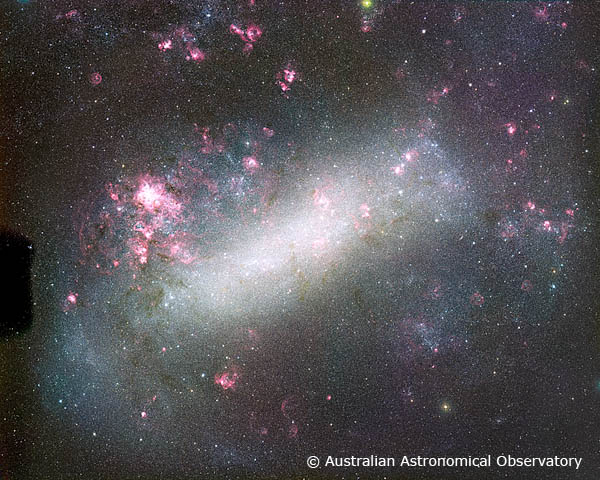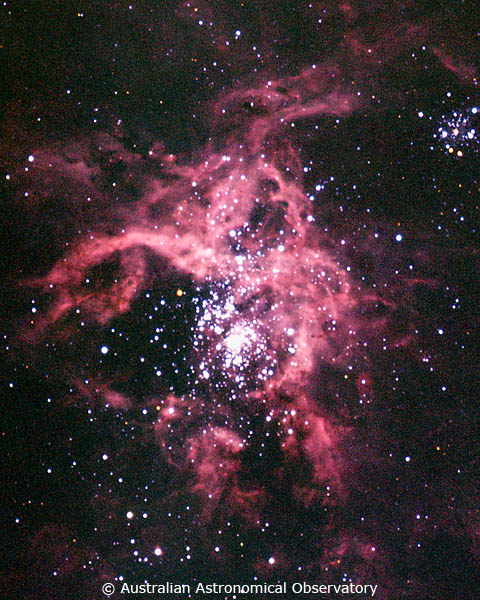It looks like you're using an Ad Blocker.
Please white-list or disable AboveTopSecret.com in your ad-blocking tool.
Thank you.
Some features of ATS will be disabled while you continue to use an ad-blocker.
12
share:
Full Story - Guardian
A team of scientists at the Australian National University has discovered the oldest known star in the universe.
The discovery of the heavenly body, which formed about 13.6bn years ago, has allowed astronomers to study the chemistry of the first stars.
Lead researcher Dr Stefan Keller of the ANU’s Research School of Astronomy and Astrophysics called the find a “one in a 60m chance”.
It seems Australian astronomers have found the light from the oldest known star to date. The star designated SMSS J031300.36-670839.3 lay within the Milky Way Galaxy at a distance of 6,000 light years from Earth and would have died long ago after a spectacular super-nova.
It's amazing to think that long after the death of a star it's previously emitted light seems to go on and travel forever, leaving a long lasting legacy and enabling us to study the Universe as it was billions of years ago.
edit on 9/2/14 by Havick007 because: (no reason given)
That's a cool discovery! It doesn't say that this star exploded in supernova, though. Rather, it was born in the wake of one of the first stars in
the universe that has gone supernova.
web.mit.edu...
www.smh.com.au...
web.mit.edu...
www.smh.com.au...
Havick007
The star designated SMSS J031300.36-670839.3 lay within the Milky Way Galaxy at a distance of 6,000 light years from Earth and would have died long ago after a spectacular super-nova...
This "oldest known" star is only 6000 light years away, which is very, very close in universe terms. The light we see from this star is only 6000 years old, which was not that long ago at all. This star is almost certainly still shining. As 'wildspace' mentioned above, the star in question has NOT died in a supernova (at least not that we yet know). The article says this oldest known star formed in the wake of supernova explosion of another star (although they did not say in this article how they knew that part).
I also think that there must be other similarly older stars (and even older) out there. It seems unlikely that we would be lucky enough to have THE oldest star right in our own backyard (again, in terms of the entire universe).
edit on 2/9/2014 by Soylent Green Is People because: (no reason given)
reply to post by Havick007
Something does not make sense here. This star cannot be this ancient if it is within our own galaxy. We are a middle aged galaxy compared to this star.
Kratos
Something does not make sense here. This star cannot be this ancient if it is within our own galaxy. We are a middle aged galaxy compared to this star.
Kratos
Kratos40
reply to post by Havick007
Something does not make sense here. This star cannot be this ancient if it is within our own galaxy. We are a middle aged galaxy compared to this star.
Kratos
Galaxies form and evolve. Estimated age of our galaxy is around 13.2 million. It forms from the medium of things that were around it, and that includes some of the first stars.
Formation and Age of the Milky Way
reply to post by Kratos40
Stars have a lifetime.
In any case, it is the oldest known star. But since we can't see many stars in other galaxies...you can take it from there.
Stars have a lifetime.
In any case, it is the oldest known star. But since we can't see many stars in other galaxies...you can take it from there.
edit on 2/9/2014 by Phage because: (no reason given)
Kratos40
reply to post by Havick007
Something does not make sense here. This star cannot be this ancient if it is within our own galaxy. We are a middle aged galaxy compared to this star.
Kratos
Our galaxy has swallowed other galaxies. Perhaps this star did not always belong to ours.
I am not completely sure how oldest star appeared in our neighborhood, but how this one can be oldest known star, if there is a star that according to
cosmos model is older then cosmos itself.
www.armaghplanet.com...
www.nasa.gov...
Those astronomers don't make any sense... Please note, Methuselah Star is only 190 light years away from us.
The most recent estimates using both improved theories of stellar structure and more accurate distance data from the Hubble Space Telescope give a more reasonable estimate of 14.5 billion years (with an uncertainty of plus or minus 800 million years). This makes HD 140283 the oldest known star with a well-determined age. It has been called the “Methuselah Star”, and although it looks quite normal at first, looking closely we see what a strange star it is. Its diameter is almost half as a large again as our own Sun, but its surface temperature is roughly the same as the Sun’s. This combination of size and temperature means HD 140283 is almost four times as bright as our Sun. None of these statistics are unusual, but the star’s composition has been known to be anomalous since the 1950s. Compared to other relatively nearby stars HD 140283 is “metal-poor”, in astronomical jargon this means it is lacking in elements heavier than hydrogen and helium. This may not seem particularly odd but is a vital clue in determining the star’s age.
www.armaghplanet.com...
www.nasa.gov...
Those astronomers don't make any sense... Please note, Methuselah Star is only 190 light years away from us.
reply to post by Kratos40
It didn't make much sense to me when I first read either.
When writing the OP, I also made the assumption that if the star was that old (13 billion yrs) that it would have since died out. Unless it actually has died in the past 6000 years, that part doesn't make sense to me. How could a star burn for so long?
Here is a more detailed article on the find -
It didn't make much sense to me when I first read either.
When writing the OP, I also made the assumption that if the star was that old (13 billion yrs) that it would have since died out. Unless it actually has died in the past 6000 years, that part doesn't make sense to me. How could a star burn for so long?
Here is a more detailed article on the find -
'Oldest star' found from iron fingerprint (Update)
Full Article - Phys.org
The team has identified a distant star several thousand light-years away—named SMSS J031300.36-670839.3—that contains a level of iron whose upper limit is so low that it suggests that the star is a second-generation star, having arisen from the gas cloud enriched by one of the very first stars in the universe. But because there is so little iron in the star, the researchers say the star's progenitor must not have been very energetic, as it may have failed to expel all the heavy elements made in its own core.
The findings, which are published this week in the journal Nature, provide a glimpse of what the activity in the very early universe may have looked like, and point to much more diverse properties among the very first population of stars.
To find the earliest generations of stars, scientists look for vanishingly small abundances of the first heavy elements created, such as iron. Stars with very low chemical abundances, they believe, may have formed in the earliest epoch of the universe, more than 13 billion years ago, when few elements had yet formed.
reply to post by Phage
That is what confused me about the article. How can the star still be there if it is so old?
In regard to viewing extra-galactic stars, what about the LMC (Large Magellanic Clouds) for example?
That is what confused me about the article. How can the star still be there if it is so old?
In regard to viewing extra-galactic stars, what about the LMC (Large Magellanic Clouds) for example?
The Large Magellanic Cloud
(LMC - Wide field)
(The nebula around 30 Doradus (NGC 2070) in the LMC)
he Large Magellanic Cloud (LMC) is the nearest galaxy to the Milky Way but less than one tenth as massive; even so it contains the equivalent of over ten billion solar masses of material in the form of stars, gas and dust. The LMC is at a distance of 170,000 light years and is visible to the unaided eye from southern latitudes, with an apperance rather like a detached piece of the Milky Way, in the otherwise barren constellation of Dorado.
Havick007
reply to post by Kratos40
It didn't make much sense to me when I first read either.
When writing the OP, I also made the assumption that if the star was that old (13 billion yrs) that it would have since died out. Unless it actually has died in the past 6000 years, that part doesn't make sense to me. How could a star burn for so long?
It's most probably a red dwarf or an orange dwarf type of star. They have life spans longer than the universe has been in existence.
en.wikipedia.org...
en.wikipedia.org...
edit on 11-2-2014 by wildespace because: (no reason given)
reply to post by wildespace
Without reading the Wiki links that doesn't make much sense either..
I don't think that is correct.
Are you saying that brown/red dwarfs were in existence before the big bang or the creation of the "Universe"?
I have to disagree!
Edit;
After reading, I think you may have misread the article/information. The lifespan of the brown/red dwarfs can be very long but I don't think they were in existence before the known universe.
Without reading the Wiki links that doesn't make much sense either..
I don't think that is correct.
Are you saying that brown/red dwarfs were in existence before the big bang or the creation of the "Universe"?
I have to disagree!
Edit;
After reading, I think you may have misread the article/information. The lifespan of the brown/red dwarfs can be very long but I don't think they were in existence before the known universe.
The less massive the star, the longer this evolutionary process takes; for example, it has been calculated that a red dwarf with a mass of 0.16 solar masses (approximately the mass of the nearby Barnard's star) would stay on the main sequence during 2.5 trillion years that would be followed by five billion years as blue dwarf, in which the star would have 1/3 of the Sun's luminosity and a surface temperature of 8,500 Kelvin.[8]
edit on 11/2/14 by Havick007 because: (no reason given)
reply to post by wildespace
Oh wait a sec, I see what you were trying to say I get it now!
My apologies, I thought you were trying to say that they had been in existence longer than the Universe.
Oh wait a sec, I see what you were trying to say I get it now!
My apologies, I thought you were trying to say that they had been in existence longer than the Universe.
This is interesting.
Considering how little of the sky we have observed to date, i believe many more exciting discoveries are to come soon. Our knowledge and technology is speeding things up.
Considering how little of the sky we have observed to date, i believe many more exciting discoveries are to come soon. Our knowledge and technology is speeding things up.
new topics
-
Do we live in a simulation similar to The Matrix 1999?
ATS Skunk Works: 26 minutes ago -
BREAKING: O’Keefe Media Uncovers who is really running the White House
US Political Madness: 53 minutes ago -
Biden--My Uncle Was Eaten By Cannibals
US Political Madness: 1 hours ago -
"We're All Hamas" Heard at Columbia University Protests
Social Issues and Civil Unrest: 1 hours ago -
The good, the Bad and the Ugly!
Diseases and Pandemics: 3 hours ago -
Russian intelligence officer: explosions at defense factories in the USA and Wales may be sabotage
Weaponry: 6 hours ago -
African "Newcomers" Tell NYC They Don't Like the Free Food or Shelter They've Been Given
Social Issues and Civil Unrest: 7 hours ago -
Russia Flooding
Other Current Events: 8 hours ago -
MULTIPLE SKYMASTER MESSAGES GOING OUT
World War Three: 9 hours ago -
Two Serious Crimes Committed by President JOE BIDEN that are Easy to Impeach Him For.
US Political Madness: 9 hours ago
top topics
-
Go Woke, Go Broke--Forbes Confirms Disney Has Lost Money On Star Wars
Movies: 16 hours ago, 13 flags -
Biden--My Uncle Was Eaten By Cannibals
US Political Madness: 1 hours ago, 11 flags -
Elites disapearing
Political Conspiracies: 14 hours ago, 11 flags -
Pro Hamas protesters at Columbia claim hit with chemical spray
World War Three: 12 hours ago, 11 flags -
African "Newcomers" Tell NYC They Don't Like the Free Food or Shelter They've Been Given
Social Issues and Civil Unrest: 7 hours ago, 9 flags -
BREAKING: O’Keefe Media Uncovers who is really running the White House
US Political Madness: 53 minutes ago, 9 flags -
Freddie Mercury
Paranormal Studies: 17 hours ago, 7 flags -
Two Serious Crimes Committed by President JOE BIDEN that are Easy to Impeach Him For.
US Political Madness: 9 hours ago, 6 flags -
911 emergency lines are DOWN across multiple states
Breaking Alternative News: 9 hours ago, 6 flags -
A Personal Cigar UFO/UAP Video footage I have held onto and will release it here and now.
Aliens and UFOs: 14 hours ago, 5 flags
active topics
-
Biden--My Uncle Was Eaten By Cannibals
US Political Madness • 24 • : ToneD -
Russian intelligence officer: explosions at defense factories in the USA and Wales may be sabotage
Weaponry • 138 • : FlyersFan -
"We're All Hamas" Heard at Columbia University Protests
Social Issues and Civil Unrest • 6 • : FlyersFan -
Revolution in advertising: the Russians launched a unique satellite
Science & Technology • 71 • : purplemer -
Gold and silver prices....woo hoo
History • 76 • : mysterioustranger -
African "Newcomers" Tell NYC They Don't Like the Free Food or Shelter They've Been Given
Social Issues and Civil Unrest • 13 • : Cre8chaos79 -
Mood Music Part VI
Music • 3054 • : underpass61 -
Do we live in a simulation similar to The Matrix 1999?
ATS Skunk Works • 3 • : purplemer -
Marjorie Taylor Greene Files Motion to Vacate Speaker Mike Johnson
US Political Madness • 58 • : WeMustCare -
911 emergency lines are DOWN across multiple states
Breaking Alternative News • 3 • : mysterioustranger
12



